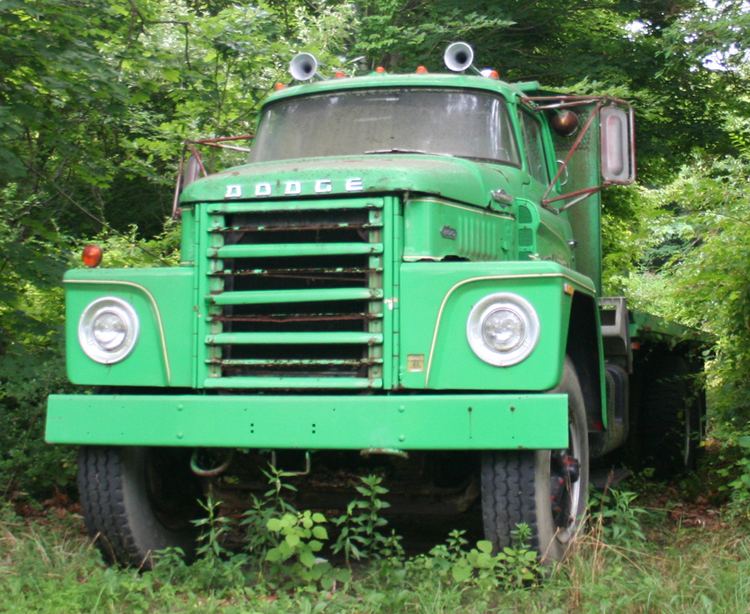Manufacturer Dodge (Chrysler) Class Heavy-duty truck | Production 1960-1976 Body style 2-door truck | |
 | ||
Also called Dodge C-series
Dodge C500-C1000
Dodge CT-series
Dodge NC-series
Dodge NCT-series
Dodge PC-series
Dodge PD-series
Fargo LCF Assembly Warren, Michigan, United States (Sherwood Assembly) | ||
The Dodge LCF (for "Low Cab Forward") was a series of medium- and heavy-duty trucks built by Dodge from 1960 to 1976. They replaced the Dodge "Forward Look" range of cabover trucks built in the fifties. The 500 through 700-series were medium duty only, while 800 through 1000-series were reserved for heavy-duty versions.
LCF range was also sold in Canada with the Fargo badge. In addition, following Chrysler Corporation policy of badge engineering to provide a greater number of sales outlets overseas, LCFs were also marketed in some countries with the De Soto badge.
LCF cabin section was taken directly from the 1956-1960 range of Dodge pickup trucks, with its panoramic windshield, but was fitted with a unique front section. One of the Dodge LCF's main selling points was accessibility; the sides of the engine compartment and fenders being arranged to swing open. A mechanic could easily stand between the engine and the front wheel while working.
A range of Dodge and International Harvester gasoline engines were available, as were diesels from Perkins (for lighter variants), Cummins, Caterpillar, and Detroit Diesel for the heaviest duty versions, both six-cylinder and V8 versions. Gasoline-powered versions were simply called the "C"-series, followed by a numeral indicating weight class, and all of them were V8-powered. Perkins diesel-engined units were called "PC", while inline diesels were called "CN" and V-type diesels were "CV". A "T" following the letters indicates a tandem rear axle. On LCFs equipped with inline-six diesels the engine intruded into the cabin. This was covered with a removable panel for maintenance. A near unlimited range of engines, transmissions, and rear axles were available for what was usually a built-to-order truck. The biggest diesel available was the Cummins V-903, a giant 903 cu in (14,794 cc) unit with a modest 289 hp (216 kW) max output. The smaller 567 cu in (9,299 cc) Detroit Diesel 8V-71N was the most powerful engine, with 300 hp (224 kW) on tap.
With Dodge pulling out of the heavy truck business, the C-series' last year in the US market was 1975. A few hundred more CNT800's and CNT900's were built for export in 1976.
